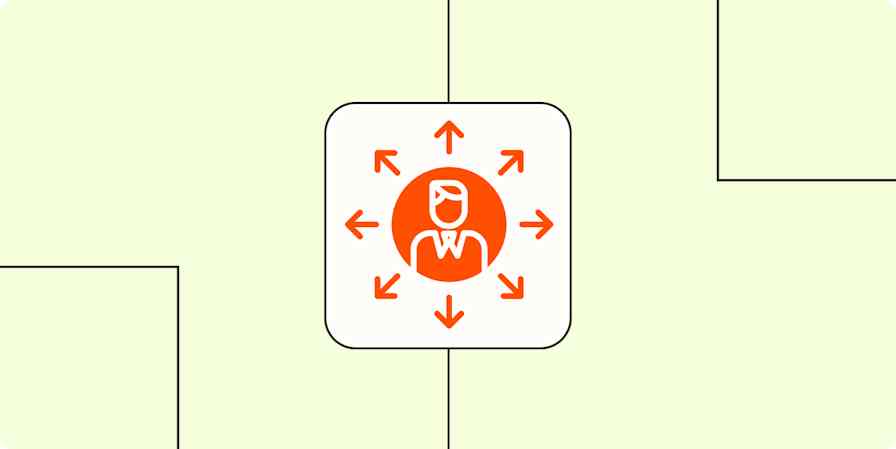I was 12 weeks pregnant and working at your proverbial fast-paced startup. It was small, and I was the only woman there. There was no HR rep or employee handbook or anything that detailed the parental leave policy. Frankly, I was nauseous thinking about telling the two co-founders that I was pregnant.
Up until that point, that startup had been my baby. I knew I was an integral part of daily operations, and I'd even considered holding off getting pregnant until things slowed down.
Obviously, when I told my bosses, they were ecstatic for me—and extremely supportive. But we needed to talk about the elephant in the room: maternity leave.
"We don't know what's normal for maternity leave. We'll leave it up to you to let us know what you need," they said. I didn't know what was normal, either, as this was my first pregnancy. All I knew was that it wasn't a massive company with mile-long policies and processes for this sort of thing.
In the end, we agreed on 12 weeks of paid leave. That's when we got to talking about logistics. There was a lot to be done. A lot to hand off and nobody to hand it off to. We ended up hiring someone to take over my workload when I was well into my third trimester. She was great, but I was anxious.
"I don't think I'm going to be completely offline during maternity leave," I told the founders.
"That's ridiculous! Enjoy your time; we have everything covered," they declared.
We had this conversation multiple times over the course of my pregnancy. I know their hearts were in the right place and they had the right intentions, but I felt that I wasn't in control of what was best for me.
Why I wanted to work during maternity leave
I honestly wasn't worried that things weren't going to get handled or go smoothly. It was the fact that things were running at the speed of light, and the thought of having to come back to what would essentially be a new company by the time my leave was over was really overwhelming to me. I'd have to learn new processes and new tech and build relationships with our customers all over again. It was exhausting to think about.
At 37 weeks along, I went into labor. I shot off a Slack message around midnight; I'd written it weeks before, and it detailed a long list of where I had left off with things at work. I ended it by saying that I would check in the next week.
I still get crap for this, but I even responded to some Slack messages in the hospital while I was in labor. After the epidural, of course. Why? Because I was in a completely unknown and uncomfortable scenario. I was sitting in a hospital, hooked up to what felt like a million things, and in that moment, the only thing that felt normal was to respond to Slack.
This theme continued after I gave birth, but not because I was anxious about work or nervous about missing out on all the changes. Those feelings were long gone by the time my baby arrived. This was a different feeling entirely.
At first, it was fine; people were coming over constantly to see this little six-pound boy. My husband was home, my mom was there, I felt good. I didn't even think about work. Then, just as fast as they came, everyone left, and my husband returned to work. I was home alone with a baby who slept for hours on end and only woke up to eat. I was alone and isolated, my hormones were on another planet entirely, and it felt like everyone got to return to normal except for me.
So, I did what felt normal: I started to work. I probably could have started a hobby or binged my way through Netflix, but I've never been much for either, so it would have just made me feel even more abnormal.
I checked my emails, asked some questions, updated some documents, and I felt good. I felt normal.
"Spend this time with your newborn; you'll never get this time back," people would say, absolutely appalled that I would even open my laptop during such a precious time in my life. I felt such pressure to do what society wanted me to do as a mother—that if I wasn't staring at my baby 24/7, I was a bad mother. I knew I wasn't, but I couldn't help but wonder if what I was feeling was unnatural.
Looking back, I don't feel for a second that I missed out on something wonderful. I was there anytime he was awake (at all hours of the night). He slept in his bassinet while I worked on monthly KPIs for the company and sifted through all the emails. Was it nice knowing that it wasn't required of me to work? Yes. Was it nice that, in the end, I got to choose what felt right for me? Absolutely.
While I'm a big advocate for 12+ weeks of fully-paid parental leave, there shouldn't be a one-size-fits-all policy. No two parents and no two babies are the same. Expecting someone to be absolutely offline for 12 weeks because you feel like that's what's best for them doesn't make sense.
So, after using myself as a guinea pig for my uncommon parental leave approach, I want to share with you how I planned this and maybe inspire you to look into a more customizable parental leave policy.
Communicate early and often
Given that I worked at a smaller company and there were a lot of logistics involved, we regularly communicated about my work and my upcoming maternity leave before I left.
Once you know that someone's parental leave will be approaching in the next few months, you need to open up the lines of communication to discuss what the different needs are and how you can support them. These conversations were really productive because I was able to present various ideas on what a hybrid parental leave could look like.
For example, we discussed a separate Slack channel with updates relevant to my role, so I could catch up whenever I wanted without being overwhelmed by all the channels. We also talked about a bi-weekly check-in call with any important information.
Since we'd been discussing these options for some time, we all felt prepared for what was to come and how we would handle it.
Set a date for coming back full-time
Each company is different, with different policies and state laws to follow. But if you're going to do a hybrid-type parental leave plan, you still want to set a date for when the employee is going to return to full-time hours and duties. This way, it sets a clear boundary of expectations and no lines get blurred as to when they're truly back full-time.
Everyone knew that I would be back full-time in August, and just because I was online here and there before August didn't mean my maternity leave changed or that I was available to dive into whatever people needed. This also prevented me from putting pressure on myself to be online more than I felt was good for me.
Don't take advantage
My team and I set clear boundaries early on of what I was willing to do—and not willing to do—during leave. I was never scheduled for any meetings or calls, and I didn't involve myself in anything that had a due date attached to it. I chose to pop in and out as my days allowed, and we built this mutual understanding that I could dictate what I was comfortable with.
They never took advantage of my time or tried to bring me into any projects. Some weeks, I logged on daily, and other weeks, I was completely offline. During those days when I was online, nobody bombarded me with messages and questions, and I was free to do whatever felt right for me at the time. I might have read some emails or checked in with one of my coworkers, but I never felt taken advantage of or pressured to be there.
Prepare for no contact
Nobody knows how bringing home a baby will change their thoughts, opinions, and expectations. This is something my team and I communicated about often. I personally knew I was going to need to be involved in some capacity early on, and that didn't change after I brought my baby home.
But that isn't always the case. Babies' needs shift daily and can be very unpredictable. My team was prepared for me to go dark for 12 weeks because we all recognized that I didn't know how I would feel or how my baby would act as we got settled in. You need to be open to the possibility that someone who thought that a hybrid parental leave plan would be a good fit might decide otherwise when that leave time kicks in. Make sure you have plans in place that are conducive to them being offline throughout the entire leave.
Be supportive
I know this may seem obvious, but when I first pitched the idea of a hybrid maternity leave to the co-founders of the company I was working for, they were pretty resistant. Obviously, their intentions were good, and they wanted to make sure I didn't feel pressured to do a hybrid leave. That's fair—you never want your people to feel uncomfortable, overwhelmed, or anxious about work while they're away from work.
But I want to stress the importance of supporting your employees in whatever they choose. For me, a hybrid plan worked because it made me feel more connected to the outside world and gave me a sense of routine and normalcy. This time is all about allowing people to have control over their choices and doing what feels right for them.
In the end, I wouldn't have changed a thing about my maternity leave. I loved that I was able to be home with my baby while also checking in with my coworkers and keeping myself up-to-date. I was even surprised to find that as I talked with others about my hybrid leave, they were really fascinated by the idea. "I wish I could have done that!" people said to me. "That would have made me feel so much better when I was on leave."
When I returned to work full-time, I didn't feel overwhelmed or anxious about having to get caught up and work through thousands of emails, and when I'd get home, I was able to focus on my family and be present with them instead of worrying about the mountains of work tasks on my to-do list.
This may not be the right option for everyone, and it may not even be the right option for me next time around. But at Lunarlo Consulting, I teach my clients about this option, and I think it's worth discussing. Having the ability to customize a plan that gave me the freedom to choose what my leave looked like was empowering and comforting—and in the end, right for me.









